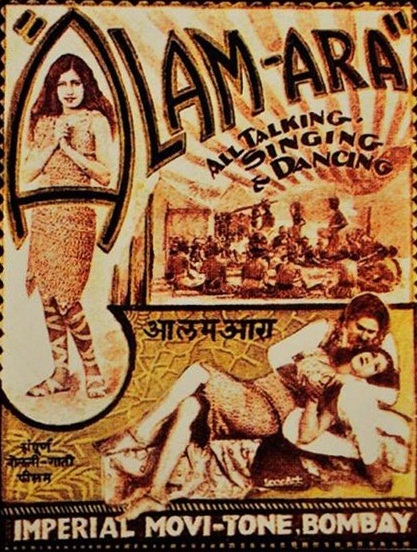by Bansari Kamdar

Alam-Ara (1931), the first Bollywood talkie
We Indians love our clichéd three-hour long movies featuring big Bollywood stars, catchy dance numbers, and memorable melodies, movies often set in exotic locations that are pretty but entirely irrelevant to the story, lots of romance and action, and–last but by means the least – a happy ending.
For the average Indian, Bollywood movies offer a perfect escape from the daily grind. How beloved are these movies, you ask? One of them, Diwali Dulhaniya Le Jayenge, has been running continuously in some Indian theaters since its release in 1995, and is still going strong. The title, by the way, translates in English to The Brave-Hearted Will Take the Bride, which alone tells you all you need to know about the plot.
For the outsider, this is all very puzzling. Bollywood produces about 1,000 movies a year, which is twice as many as Hollywood, but the genre is still largely unknown by the average western movie-goer. So I’ve put together a few of the more common questions I’ve been asked by my American friends about Bollywood movies.
Why are Bollywood movies so lo-o-o-ng?
A test match in the beloved sport of cricket in India can last five days, and Indians will carefully follow every ball. An Indian wedding lasts three days. So a three-hour movie isn’t that big a deal for us.
Why are there so many songs?
Bollywood movies are indeed rich in musical numbers, and, while many present-day movies are slowly moving away from this trend, it was not very long ago that 10 musical numbers in a movie was the norm. The numerous songs are a part of the escapism theme that Bollywood has always openly embraced. We’re not talking realism here. Bollywood uses musical sequences as a tool to depict the characters’ emotions and as a backdrop for the action.
There are plenty of movies coming out of Hollywood. Why watch Bollywood movies?
Why order Chinese takeout? Why eat falafel? They both have something new and different to offer. The same with Bollywood; it has its own flavor, and, for someone who loves exploring, it can be a unique and precious treasure.
Why so many clichéd plots?
It’s true that Bollywood produces many commercial “masala” movies (masala is a seasoning made of many kinds of spices, and, likewise, these movies often blend many different popular genres—musical, comedy, action, etc.) These films are often melodramas topped with action heroes, damsels in distress, and one-dimensional villains, and are commonly served with a healthy serving of sweet happy endings. But there are many other forms of Indian movies. Art cinema and experimental cinema has been ever-present since the conception of Indian cinema. Today, we are seeing the return of social activism in films, a movement that was particularly strong in the 1950’s and 1960’s (known as Bollywood’s Golden Era), and young directors today are trying to capture what it means to grow up Indian in this ever-shrinking world. With changing times, Bollywood is also changing and reinventing itself.
